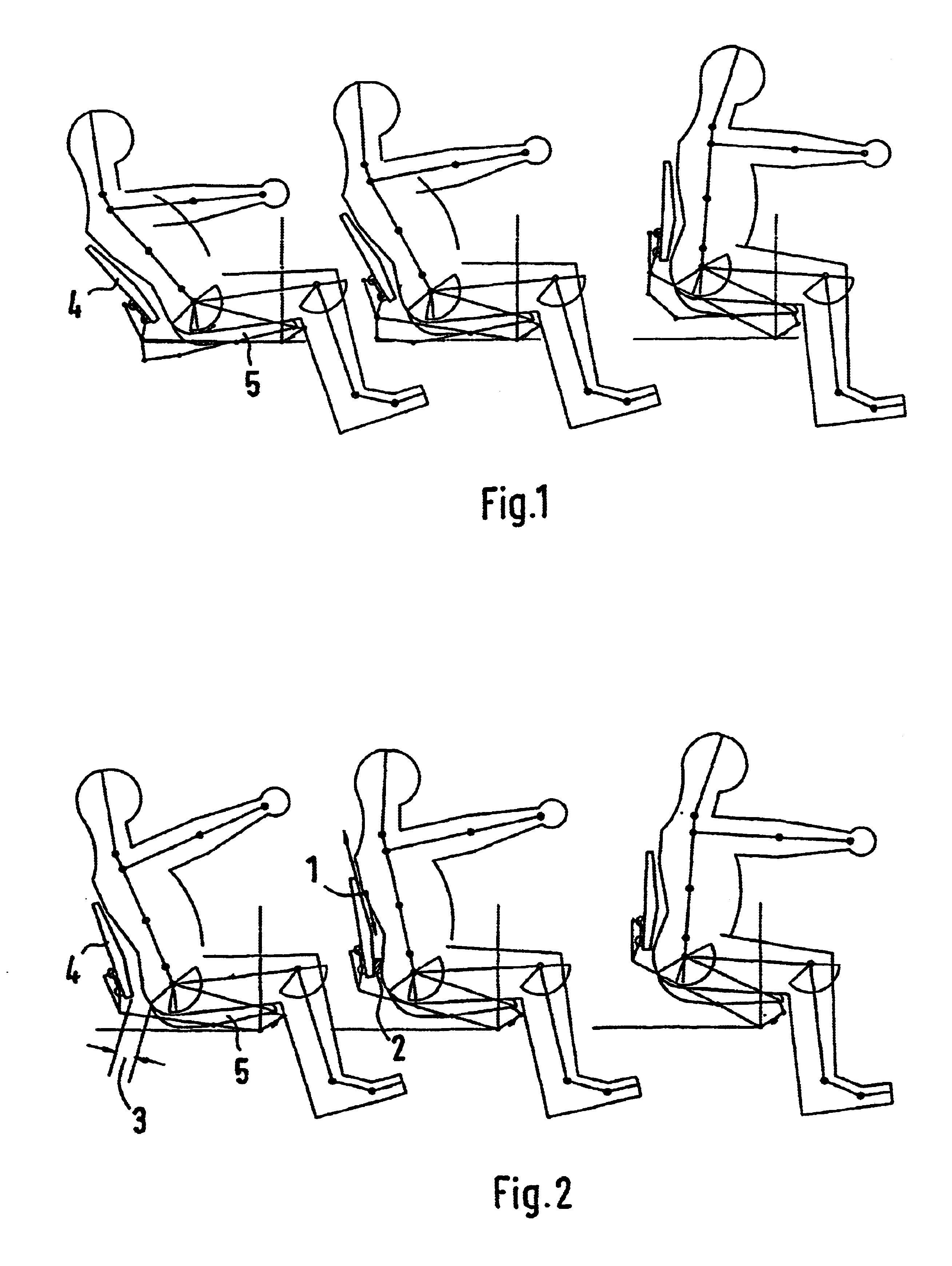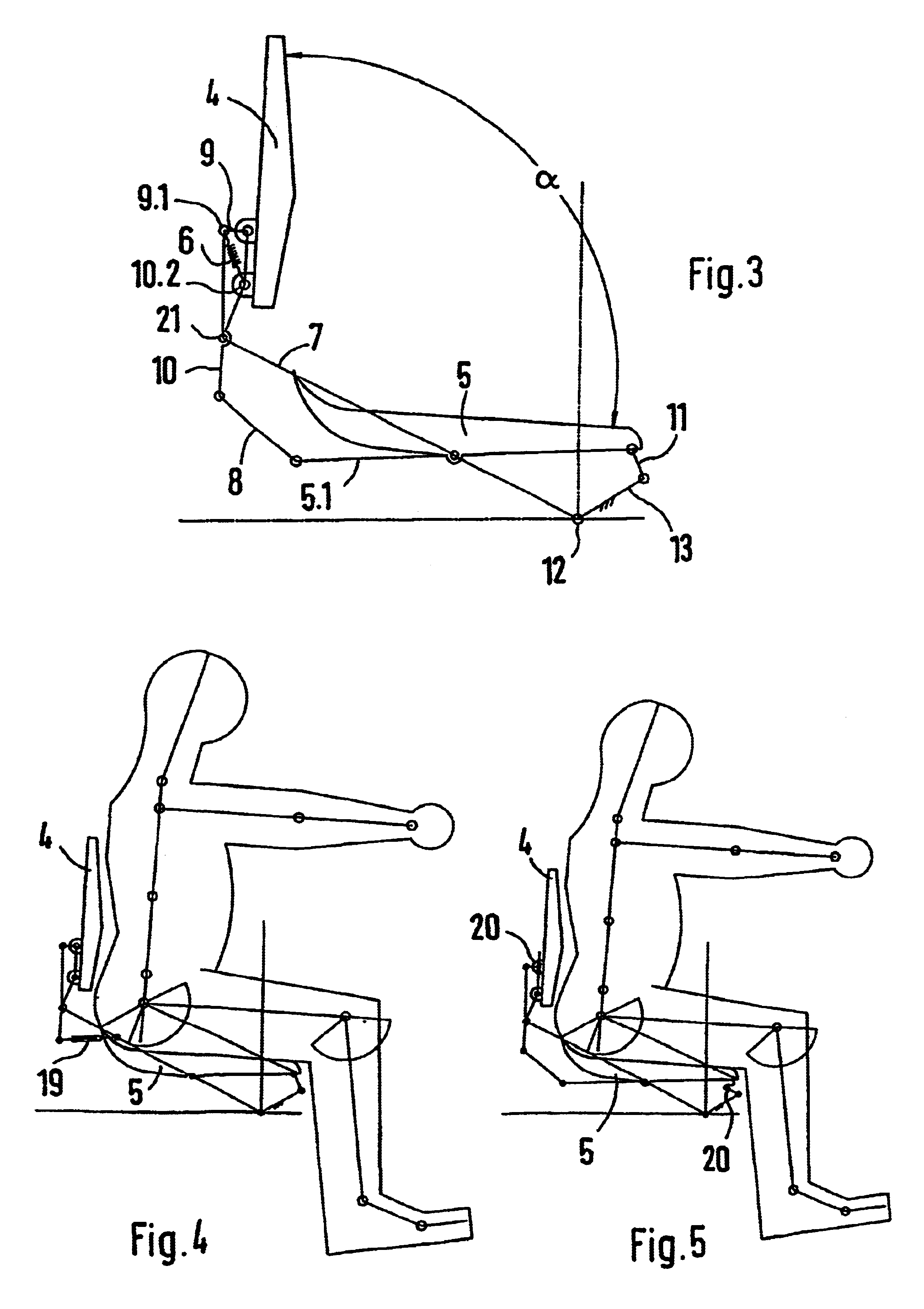Chair
a chair and seat technology, applied in the field of chairs, can solve the problems of shirt-pushing effect, inability to achieve satisfactorily, and inability to achieve continuous seat surface,
- Summary
- Abstract
- Description
- Claims
- Application Information
AI Technical Summary
Benefits of technology
Problems solved by technology
Method used
Image
Examples
Embodiment Construction
Three different seat and backrest tilts in connection with an expanded synchronization mechanism are shown in FIG. 1, in three position representations. The backrest 4 can be tilted relative to the seat 5 over a substantially greater opening range than with a conventional synchronization mechanism, such as shown in FIG. 2 for comparison. The expanded synchronization mechanism is schematically explained in FIG. 3 and shown in various representations by an exemplary embodiment in FIGS. 6 to 9.
The expanded synchronization mechanism has a number of articulated points, in which different lever elements are connected with each other. The movement of the backrest 4 and the seat 5 takes place around body-related virtual pivot points, so that the spine is supported in an ergonomically advantageous manner during seating. A seat rocker 11, oriented obliquely upward and toward the back, is hingedly connected by an upper section with a pivot shaft 15 on the seat, and by a lower section it is hin...
PUM
 Login to View More
Login to View More Abstract
Description
Claims
Application Information
 Login to View More
Login to View More - R&D
- Intellectual Property
- Life Sciences
- Materials
- Tech Scout
- Unparalleled Data Quality
- Higher Quality Content
- 60% Fewer Hallucinations
Browse by: Latest US Patents, China's latest patents, Technical Efficacy Thesaurus, Application Domain, Technology Topic, Popular Technical Reports.
© 2025 PatSnap. All rights reserved.Legal|Privacy policy|Modern Slavery Act Transparency Statement|Sitemap|About US| Contact US: help@patsnap.com



